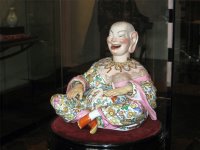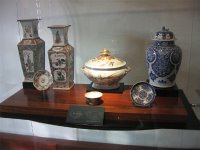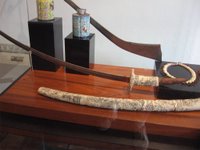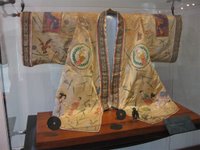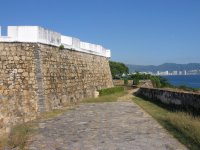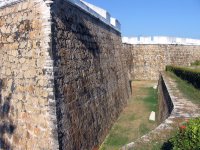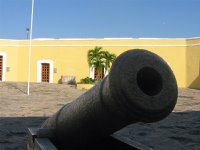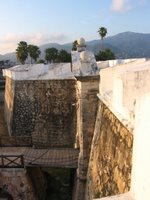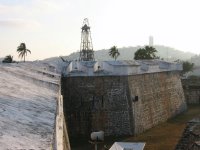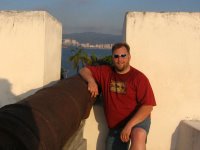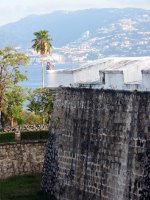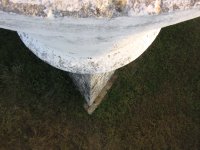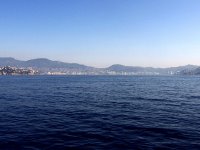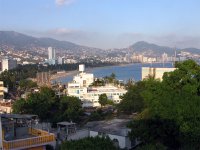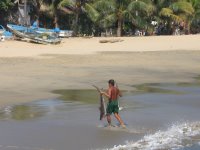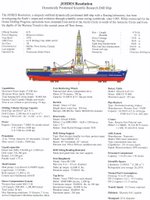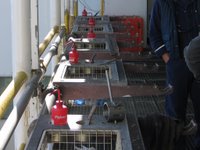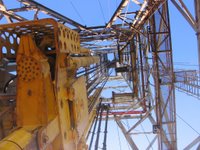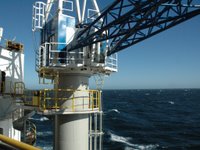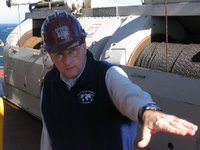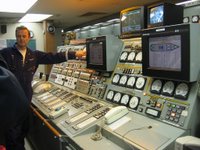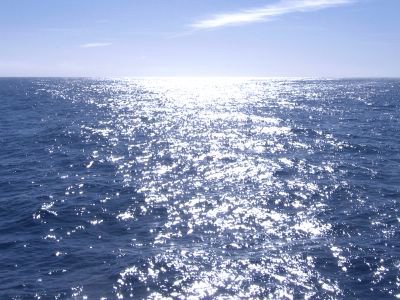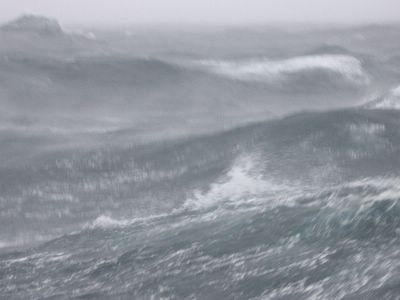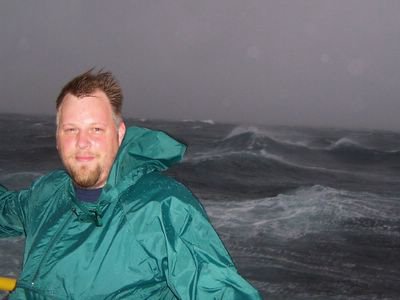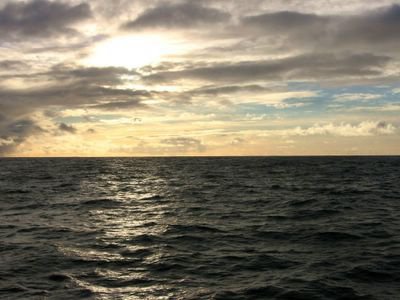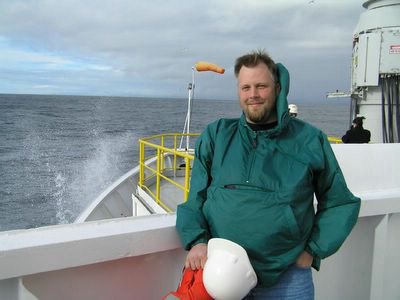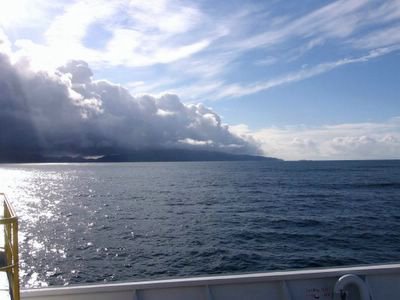Take me back to your Ocean...
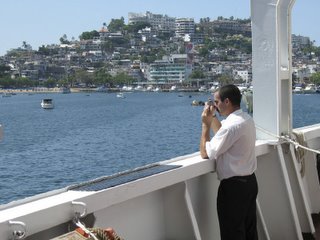
Jose Batista snaps a photo of our departure from Acapulco Bay .
We departed Acapulco on Saturday morning - I was still sleeping off our visit to town, so I missed the departure. Instead, I emerged to find nothing but wide-open Pacific Ocean surrounding the ship. We sailed for a little over three days in sunny weather, until we reached our site on Tuesday morning. Since then, far from the docile sunny weather we expected, we've been treated to almost constant cloud cover, ocean swells and rain! Oh, well...
The bad news is that I've contracted the CRUD that's been going around the ship since we left Victoria. Mike and I finally went on shift this week, so I ended up staying up for over 24 hours at one point. By the time I ended my shift at noon on Monday, I was coughing a bit and feeling wonky, and things have only gone south from there! More on that later.
The good news, is that we are now at Site 1256-D: a hole drilled into the bedrock of the ocean floor over two previous visits. On legs 206 and 309, the JR drilled down to a depth of 1255 meters (just under three-quarters of a mile).
Our mission is to deepen this hole as much as possible, bring up cores of material through the hollow drill string, and quantify & record the characteristics of the cross-section of rock. Scientists may examine our findings to learn more about the ocean floor's history, its original composition, and what changes it undergoes as it cools and becomes part of the earth's crust.
Called a "superfast spread zone", this site was chosen for its proximity to a rapidly-spreading rift in the ocean floor. This proximity allows us to drill directly into bedrock - without drilling through kilometers of sediment - and get an as-pure-as-possible snapshot of the recently-generated ocean floor. This profile can be compared to other locations around the globe, to confirm or enhance our understanding of the processes that create the earth's crust.
So... that's why we're here. Over the next couple of weeks, I'll try to explain in words & pictures how it's done...
SITE DETAILS:
Latitude: 06° 44.1631' North
Longitude: 091° 56.0612' West
Water Depth: 3634.7 mbsl; 3645.4 mbrf
Target Depth: Core as deeply as possible in the time allotted.
Penetration: Presently 1255.1 mbsf.
DRILLING PLAN:
The basic plan is to reenter Hole 1256D and clean out any fill that exists and deepen it with RCB coring until time expires or hole conditions become untenable. Before coring is resumed, a bottom water sample and temperature will be obtained. A core barrel will be dropped and any fill removed after which RCB coring will be initiated.
LOGGING:
There will be Vertical Seismic Profile (VSP) experiment at an intermediate period to be determined by downhole results. The IODP Marine Mammal Protocol will be observed during this experiment. A complete log of the hole with four tool strings will be accomplished prior to departing site.
TIME ON SITE:
TBD. We project a minimum of 37 days on site. Actual departure is dependent upon resolution of pending contract negotiations with the Indian Government..
 Originally begun in 1614, the Fuerte de San Diego was rebuilt in 1783 after an earthquake destroyed the old fort in 1776. The fort was designed to protect the port of Acapulco from attack, in order to safeguard the lucrative Spanish trade with the Far East.
Originally begun in 1614, the Fuerte de San Diego was rebuilt in 1783 after an earthquake destroyed the old fort in 1776. The fort was designed to protect the port of Acapulco from attack, in order to safeguard the lucrative Spanish trade with the Far East. 